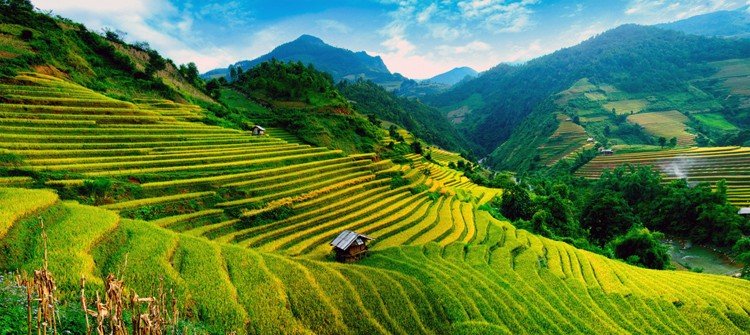Here’s something crazy to think about: Roughly 200,000 people were born today. That’s net world population growth, births minus deaths.
Each one of them constitutes a new mouth to feed. And when they come of age, those 200,000 people will consume, conservatively, about 1,250 Calories per day. Collectively, that’s 91.25 billion Calories per year for the entire 200,000 people that were born today.
Where will they get that food from?
Consider that a cup of rice contains about 300 Calories. An average annual rice harvest yields about 150 bushels per acre, or about 6.7 million Calories per acre of rice grown each year.
In very simple terms, it will take 13,600 acres of cultivated, producing rice land to generate the necessary Calories to feed the 200,000 people that were born today. That’s roughly the size of Manhattan.
Tomorrow, another 13,600 acres will be required to feed the people born tomorrow. And the next day. And the day after that.
This is a conservative estimate. Obviously people eat other things besides rice. Corn has an even lower caloric yield per acre. And as people move up the food chain into dairies and meats, the amount of Calories per acre takes a huge nosedive.
Across Asia in particular, hundreds of millions of people are now being lifted out of abject poverty and into the middle class. As I’ve traveled around the world to more than 100 countries, I’ve seen this with my own eyes– people having disposable income for the first time ever.
As people’s individual wealth levels increase, their dietary habits tend to change as well. Suddenly they start consuming more expensive foods… ‘luxury’ foods like beef. And by comparison, beef yields only about 1.1 million Calories per acre.
Simultaneous to the rapid increase in demand for food, the world is also experiencing a declining trend in supply. Water shortages, loss of topsoil, weather disasters, land development, and insane government policy are all contributing to tightening food supplies.
Perhaps most importantly, though, is the effect of monetary policy. Central bankers around the world continue to print more money. That’s all they know how to do, as if the path to prosperity is paved with paper currency conjured out of thin air.
All of those trillions of dollars, euros, yen, and renminbi end up somewhere… and such monetary inflation has been a huge force in driving up food prices. In fact, just over the last few years, we’ve seen record prices from corn to wheat to sugar to ground beef to milk.
Increasing demand. Tightening supply. Destructive policy. All of these point to a long-term trend in food. And the trend is enormous. The best case scenario is steep food prices. The worst case scenario is severe shortages.
This makes agriculture probably THE place to be over the next ten years, perhaps seconded only by shorting major currencies like the dollar, euro, and yen.
There are a number of ways to invest in agriculture… ETFs, futures, food production companies, agriculture equipment companies, food technology companies, etc. But in my view, there is no better way to make a long-term agricultural investment than owning high quality, productive land.
Like owning physical gold, farmland gives you not only the financial upside of rising agricultural prices, but also the personal assurance of a guaranteed food supply.
Later this week, I’d like to discuss different places in the world where it makes sense to own farmland. Some of my recommendations may surprise you.








